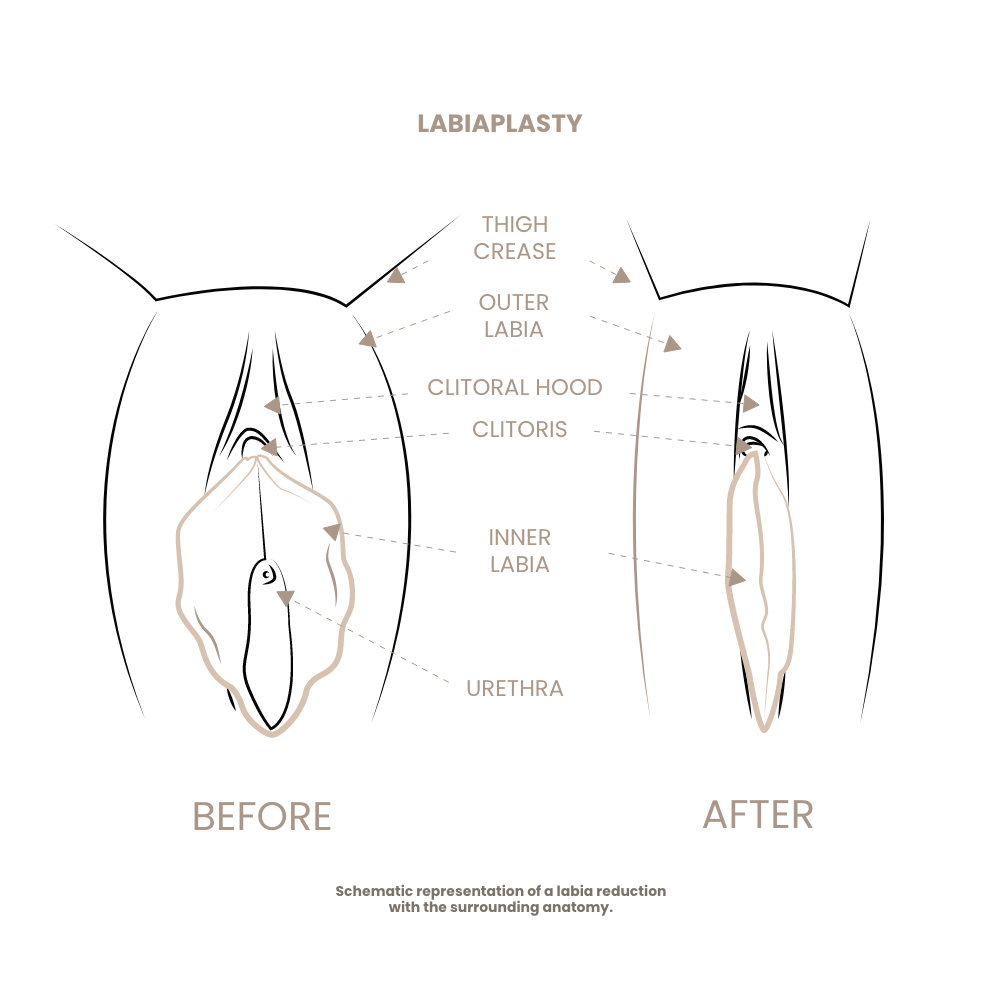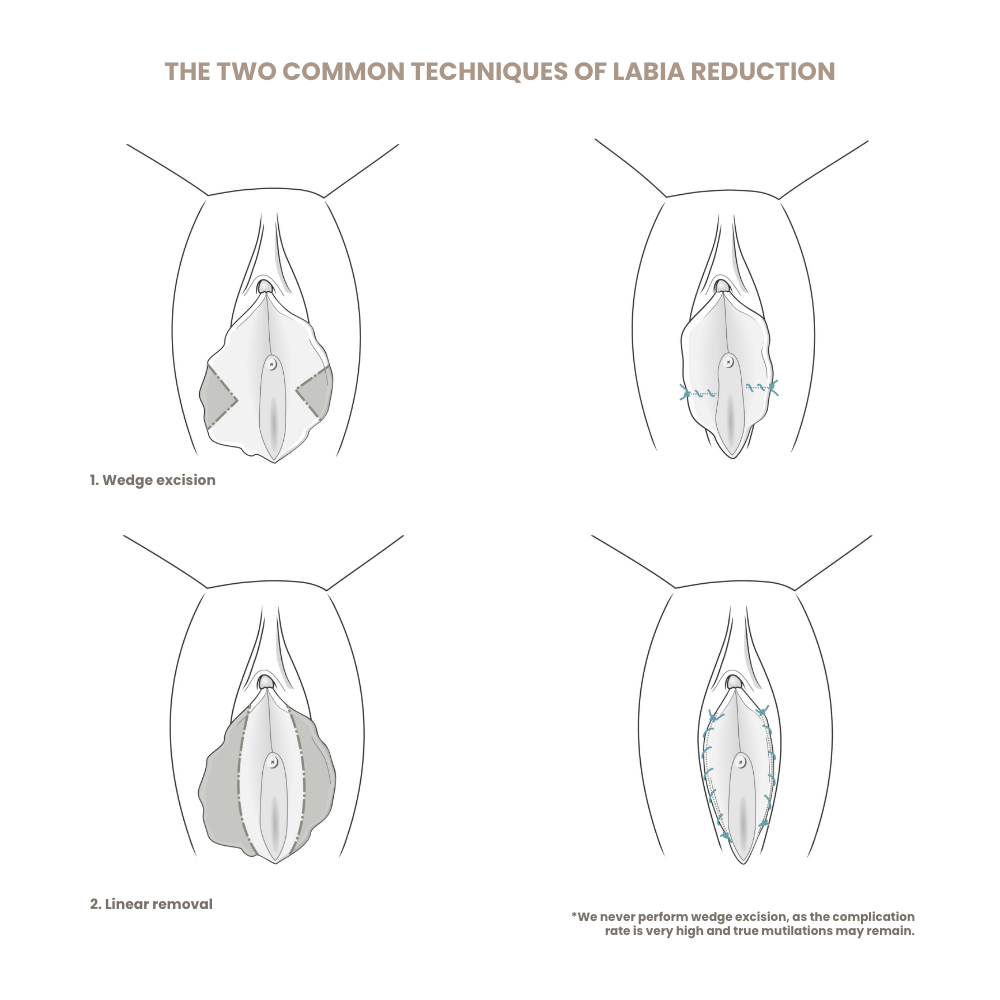
Useful information on the topic of labia correction (labiaplasty)
Overly large inner labia can sometimes lead to physical discomfort. In a study by Gress (2007), 23% of women reported functional reasons—such as pain or chafing when wearing tight clothing, during sports or cycling, and invagination of the inner labia during intercourse—as decisive factors for undergoing labia correction.
Regardless of whether aesthetic or functional reasons are the primary concern, nearly all of my patients wish for their inner labia to be not visible and of equal size when standing upright and exposed. To achieve this, the inner labia usually need to be reduced or adjusted for symmetry. However, there are also cases where the inner labia are not particularly large but still noticeably protrude. This is typically due to the outer labia being very flat and thus covering the vaginal opening (vulva) less than usual.
Intimate shaving reveals the anatomical details of the female genitalia, which shows the same variety as many other bodily features. With increased visibility of the genitals, their external appearance has also gained importance.
A precise analysis is essential for a successful correction.
When assessing the issue, the following aspects must be prioritized: Are the outer labia too small, are the inner labia too large, or is it a combination of both?
Enlarged inner labia can be symmetrized or reduced according to the patient’s wishes. If, in addition to correcting the inner labia, there is also a desire to better cover the vaginal opening, the outer labia can be enlarged using autologous fat (fat grafting), which results in the small labia being (more) covered.
Although labia correction essentially involves the removal of excess skin, this procedure should not be underestimated. The amount of skin to be removed must be precisely marked while checking skin tension, as the high elasticity of the inner labia makes asymmetry especially likely.

Labia Correction: Legal Aspects and Useful Information
In Austria, as in most European countries, any procedure on the human body that reduces sexual sensitivity is prohibited. This means, of course, that all forms of FGM (female genital mutilation) are strictly forbidden—especially if performed voluntarily or upon request. Accordingly, before a labia correction is performed, the patient must be asked whether the inner labia represent an erogenous zone, and only if this is clearly denied may the surgery be carried out.
The procedure, of course, has nothing to do with female circumcision (FGM)! On the contrary, most of my patients report an improvement in their sex life after a successful operation! The reduction of the inner labia has nothing to do with female circumcision or the removal of the clitoris. Procedures of that nature must be strongly condemned by every reputable medical professional and every human being.
In a labia correction, the clitoris, clitoral hood, and any existing hymen are, of course, left untouched.
Since 2011, there has been a consensus paper by the City of Vienna outlining important guidelines for this type of operation.
Labia Correction: Polarization Is Out of Place!
I hold the view that the correction of the inner labia has the same “justification” as any other aesthetic procedure. All cosmetic surgeries are equally necessary or equally unnecessary. If a woman feels that her labia are bothersome, she should be able to speak openly, without pressure or stigma, with her plastic surgeon or gynecologist about it.







